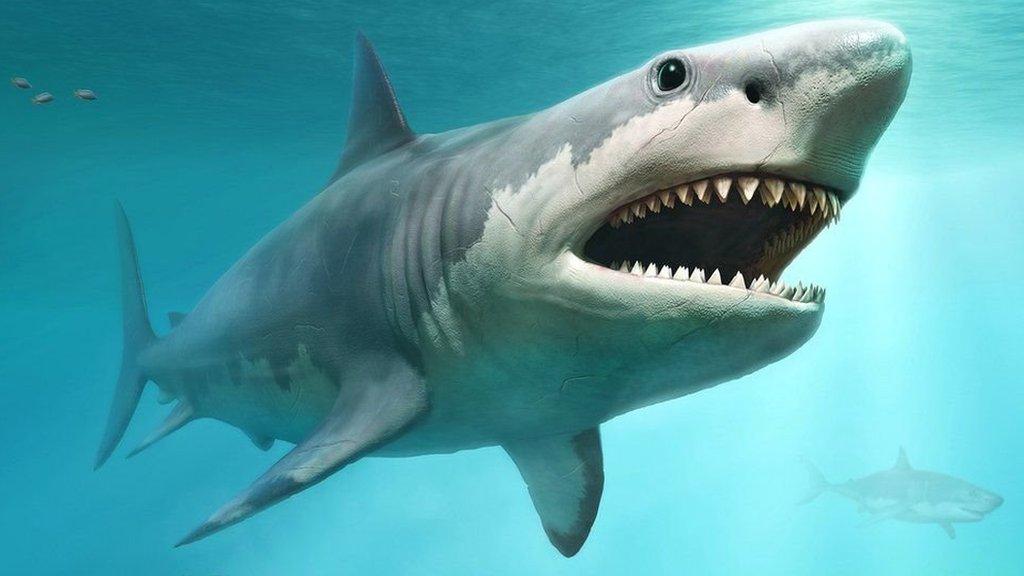Did great white sharks help megalodons become extinct?
- Published
- comments

The megalodon could grow up to 20 metres in length
A prehistoric food fight may have spelled the end for the megalodon, the largest shark that ever lived.
A study of the ocean giant's fossil teeth suggests it had to compete for food with another ferocious predator, the great white shark.
The megalodon is believed to have become extinct around three million years ago and for a long time researchers have debated what caused the giant sharks to die out.
Now, new research sheds some light on what could have happened to them.
The megalodon - and their teeth - were much larger than great white sharks
Megalodons lived between 23 and 3.6 million years ago and were once the largest shark in existence, growing up to an incredible 20 metres in length.
In comparison, the largest great white sharks today can reach a length six metres.
In the latest study, international researchers used traces of zinc found in the teeth of sharks as a tool to understand the diet of long-dead animals.
Zinc, which is a chemical element, becomes part of the enamel of sharks' teeth and can be used to provide some key information about an animal's diet.
The scientists who worked on the study compared the zinc levels in the teeth of megalodon and great whites.
They found that during the period when the sharks would have lived alongside each other, they may have competed for the same food, including whales, dolphins and porpoises.
This may have been a factor in the demise of the megalodon alongside climate change and other environmental pressures, the scientists said.
The megalodon's extinction may have also been caused by climate and environmental changes
"This is a piece in the puzzle of evidence that there was competition between the modern great white and the megalodon on aquatic food resources in the oceans at the time when both were still alive," said Prof Thomas Tutken of Johannes Gutenberg University in Mainz, Germany, who led the study.
"These results likely imply at least some overlap in prey hunted by both shark species," said Kenshu Shimada who is a professor at DePaul University in Chicago.
"While additional research is needed, our results appear to support the possibility for dietary competition of megalodon with Early Pliocene great white sharks."
How big was the megalodon?
The megalodon (Otodus megalodon) was a megatooth shark, which roamed the oceans from about 22 million years ago until about three million years ago. Its name means "big tooth".
Three times bigger than the great white shark, the megalodon could grow up to 18m (60ft) in length and weigh up to 60 tonnes.
The megalodon hit the news recently when a six-year-old boy found a shark tooth belonging to a giant prehistoric megalodon in Suffolk.
Sammy Shelton found the 10cm-long (4in) tooth on Bawdsey beach during a bank holiday break.
- Published9 February 2022
- Published6 September 2020
- Published19 February 2019
